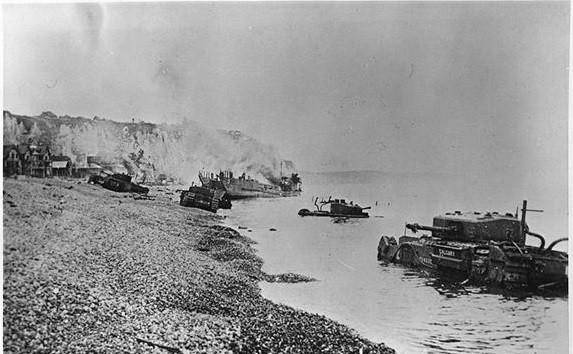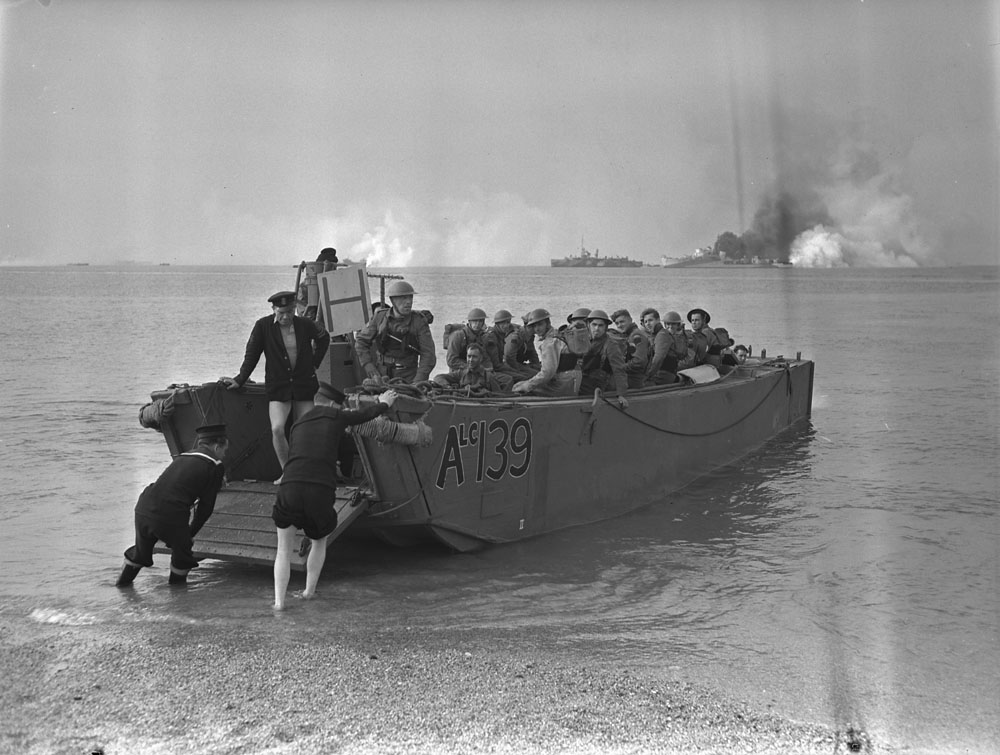This month, August 19th, sees the 76th anniversary of the (overwhelmingly) British-Canadian raid on the French port of Dieppe. This assault on the French town also featured small contingents of French, Czech and Polish troops as well as some 50 U.S. Army Rangers. Although a tactical defeat for the Allies, in strategic terms, it was certainly a victory.
By August of 1942, France had been occupied for more than two years and extensive debate over when and how it would be best to strike at the Nazi dominated continent had occurred. General George C. Marshall was one of many senior Allied leaders who were quite vocal in their belief that striking sooner, rather than later, was the way forward. Operation JUBILEE, as the endeavor was code-named, had as its principal aim the capture of a defended port, on a hostile shore by direct assault and, then, the holding of that port against inevitable counter attacks. Along the way, the Allies also planned to seize a German radar station and take back whatever equipment they could lay their hands on.
 The raid, involving more than 10,000 Allied troops, several dozen warships and landing craft and hundreds of aircraft saw tanks and infantry landed across six beaches both directly in front of Dieppe and on the flanks. The vital element of surprise, however, had been lost following a chance encounter with German ships in the English Channel, and all the beach landings faced heavy German opposition. The only small success featured the U.S. Army Rangers, attached to the British Commandos under Lord Lovat. These men successfully scaled the cliffs west of the town of Dieppe and neutralized the coastal batteries there in what would prove to be an early rehearsal for their later efforts at Point-du-Hoc in June 1944.
The raid, involving more than 10,000 Allied troops, several dozen warships and landing craft and hundreds of aircraft saw tanks and infantry landed across six beaches both directly in front of Dieppe and on the flanks. The vital element of surprise, however, had been lost following a chance encounter with German ships in the English Channel, and all the beach landings faced heavy German opposition. The only small success featured the U.S. Army Rangers, attached to the British Commandos under Lord Lovat. These men successfully scaled the cliffs west of the town of Dieppe and neutralized the coastal batteries there in what would prove to be an early rehearsal for their later efforts at Point-du-Hoc in June 1944.
The whole Dieppe operation, which cost nearly two thousand dead on the Allied side with several thousand taken prisoner, a Royal Navy destroyer sunk, and more than 50 aircraft destroyed was a high price to pay for very little achieved on the day. However, in terms of learning what NOT to do and in terms of ensuring that the D-Day landings WERE a success, years later, then the lessons of Dieppe, hard won, were invaluable.
Better and more intelligence, the avoidance of landing at sites with prepared enemy defenses, as far as possible, the need for more and better amphibious armor and vehicles in general, massive pre-landing bombardments by air and ship as well as the absolutely need for surprise were all lessons taken seriously and learned well by the Allies.
 As Marshall himself noted, in a speech delivered to the Academy of Political Sciences in November of 1942, the element of chance is ever-present in war. He acknowledged that “… ours [the military] are not exact sciences and for that reason are all the more difficult of application.” He continued by remarking that “…the recent Dieppe raid, despite all secrecy precautions… was seriously affected by the chance encounter with a German guardship [off] the French coast.” While it was impossible to plan for all eventualities, the principals learned about amphibious assault, at Dieppe, would stand the allies in good stead for the rest of the war.
As Marshall himself noted, in a speech delivered to the Academy of Political Sciences in November of 1942, the element of chance is ever-present in war. He acknowledged that “… ours [the military] are not exact sciences and for that reason are all the more difficult of application.” He continued by remarking that “…the recent Dieppe raid, despite all secrecy precautions… was seriously affected by the chance encounter with a German guardship [off] the French coast.” While it was impossible to plan for all eventualities, the principals learned about amphibious assault, at Dieppe, would stand the allies in good stead for the rest of the war.
Additional insights into the U.S. Army’s involvement in and assessment of the raid on Dieppe can be found in the Lucian K. Truscott, Jr. Papers that are part of the Marshall Foundation archives. General Truscott organized and trained the U.S. Army Rangers that participated in the raid and served as the principal U.S. observer for the operation.
